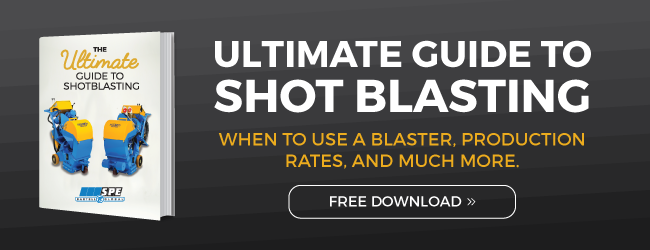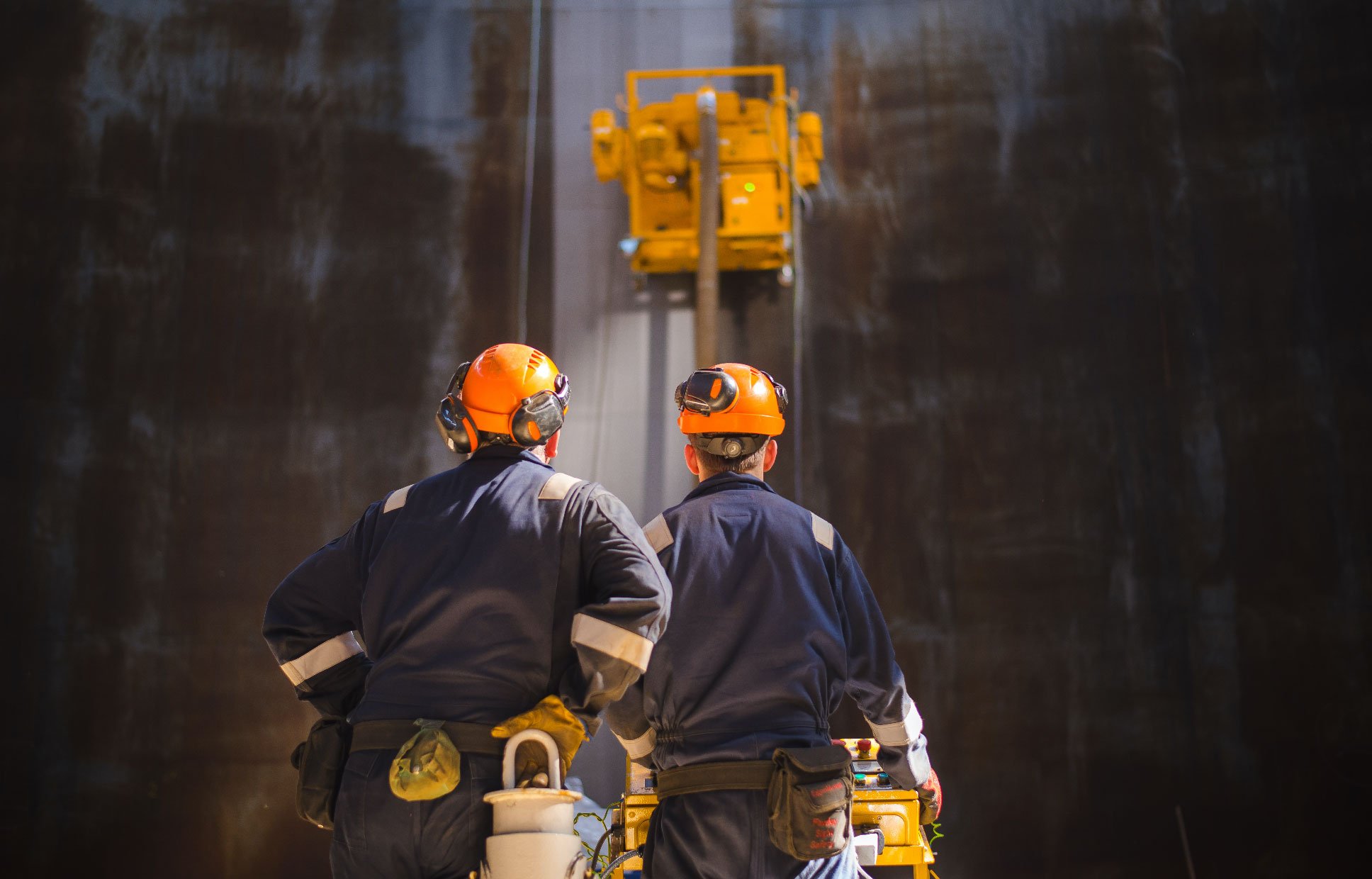Shot Blasting is a form of surface preparation that utilizes a couple different execution options. If you are sure what Shot Blasting is, we suggest you check out our Ultimate Guide to Shot Blasting E-Book.
In this blog we are going to address the two most common, Enclosed Shot Blasting (which is often referred to as simply Shot Blasting, - We will use Shot Blasting for the sake of simplicity throughout the blog) and Open Blasting. In some areas Open Blasting steel tanks is still seen as the preferred method over Shot Blasting.
Although there are times when Open Blasting is beneficial, we want to steer people away from the misconception that is the best option for blasting. We’re going to address and compare the key differences between the two methods and organize them in a quick, easy to read chart, so that you can see the direct comparison for each step of blasting.
Not only can Enclosed Shot Blasting be more efficient and offers more consistent results than open blasting, it is a more cost effective and safer way of blasting for the environment and everyone involved.
WHERE TO BEGIN?
Some people still insist on Open Blasting steel tanks because they think it’s more of a hassle to get inside the tank with a Shot Blasting Machine. Sliding yourself and a hose in and out of those fairly small entrances may seem more efficient; well, that isn’t necessarily the case in the long run.
One of our Shot Blasting machines can be disassembled into 6 easy to move pieces, easily passed through the 600mm (or 23.6 inches) opening of a steel tank, then be reassembled and ready to blast in approximately half a day. Some may complain about the disassembling step; however, those people are the ones who are missing out on reaping the real benefits of Shot Blasting. The reason this half a day of disassembling and reassembling is important, is because that initial step will significantly save you money and time blasting.
Shot Blasting VS. Open Blasting
|
Our abrasive is reusable. 25kg (aprox. 55 lbs) will last half a day. Eventually it will break down into dust and debris and is sucked out of the tank, by an attachable vacuum. Enclosed Shot Blasters clean as is blasts. Some choose to do a quick sweep for good measure, but this won’t add up to the same amount of time or effort it takes to shovel when Open Blasting. Dehumidification isn’t necessary because the surface is ready to be primed immediately after it has been Shot Blasted. The attached vacuum eliminates the dust inhalation health risk by immediately sucking it up as you are blasting. There is no extra disposal cost because all of the expendable abrasive broken down during the shot blasting process into dust and sucked up into a properly filtered vacuum. User has more control over the equipment and the result. Shot Blasting offers a constant standard of a consistent finish. More environmentally friendly due to the fact that the abrasive shot and debris is not being released into the air. |
Uses several tonnage of expendable abrasive. The expendable abrasive and debris then needs to be cleaned out of the tank. Workers must shovel or suck out the expendable abrasive and debris. After all of that – 9 times out of 10 it will still need to be vacuumed before it can be primed. During the process they will have to use dehumidification so it doesn’t become rusty before it can be primed. Without an attached vacuum, there is a high risk of hazardous dust inhalation. After you have finished blasting, the expendable abrasive and debris must be disposed of in an environmentally safe way, which adds to cost. User has little control, which often leads to inconsistency in profile Open Blasting doesn’t offer a consistent finish due to user error. Less environmentally friendly because of the large amount of expendable abrasive and debris being released into the air. |
Another myth we have heard about comparing Shot Blasting and Open Blasting, is that Open Blasting is more accessible because there is a longer hose, which makes it easier to reach all parts of the tank. In reality, that isn’t the case. For example, a 20 inch Shot Blasting machine has a suction hose that reaches 60 meters (approximately 197 feet); and if that isn’t enough, you have the ability to add additional hose with an intermediate booster fan. This allows up to 100 meters (approximately 328 feet) of hose, which is more than enough to comfortably reach all parts of the tank that will need blasting.
Lastly, Shot Blasting is approximately 40% (give or take, depending on the project) less expensive than Open Blasting. Not to mention the money saved in time not wasted on extensive clean up, cost savings from not having to dispose of expendable abrasive, and additional materials and consumables.
In no way are we saying that Open Blasting is a bad choice in every situation. Often contractors will open blast the edges of the steel tank or other small areas before the Shot Blast. Using the right tools when it makes sense, is the key to efficient work that will ensure you’re making the maximum amount of money. 


 By
By